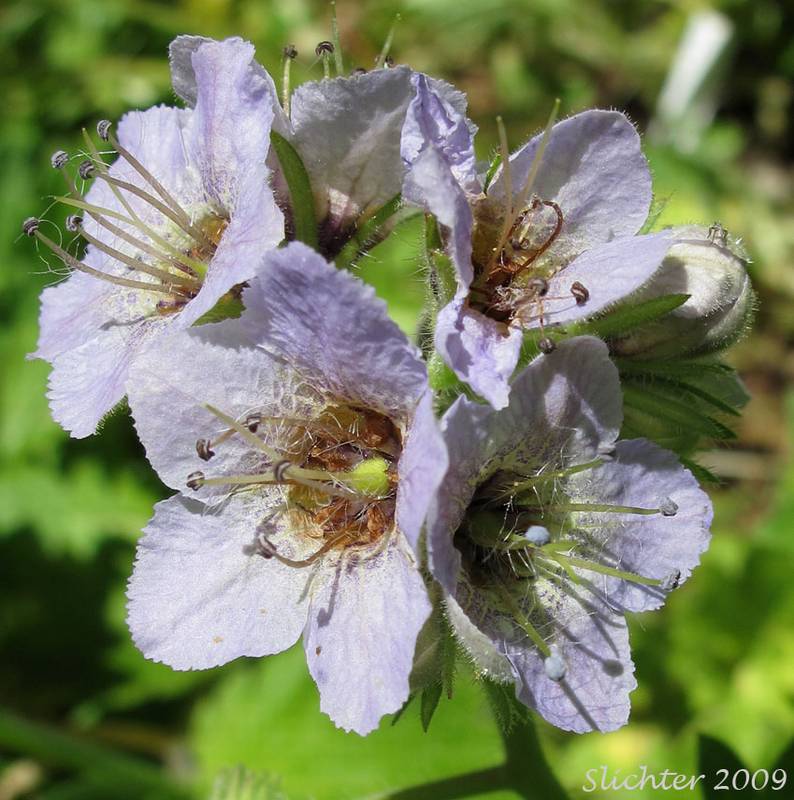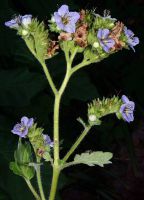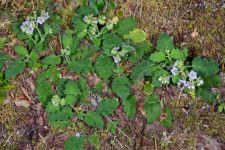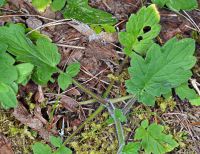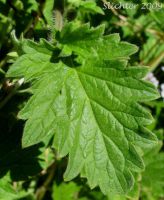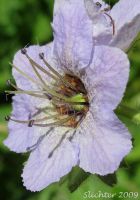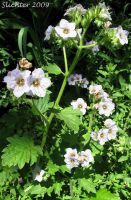Distribution: Occurring west of the Cascades crest in lowland southwestern Washington; Coos Bay, Oregon south along the coast to Sonoma County, California.
Habitat: Mostly on open, often unstable slopes at low elevations.
Flowers: June-July
Origin: Native
Growth Duration: Perennial
Conservation Status: Review Group 1 in Washington (WANHP)
Pollination: Bumblebees, bees, butterflies, wasps, sawflies
Stout, sprawling, loosely stiff-hairy perennial from a slender, branched taproot, the stems 2-8 dm. long.
Leaves all cauline, gradually reduced upward, the blade ovate to broadly elliptic, 3-11 cm. long and 2-7 cm. wide, shallowly pinnately-lobed, often with a pair of small segments near the base; lower petioles equaling the blades, upper shorter.
Inflorescence open, few-branched, with several flowers on each branch; corolla shallowly cup-shaped, lavender to bluish, 1-2 cm. wide, glabrous within; filaments equaling the corolla; style elongate, deeply 2-cleft.
Capsule with numerous seeds.
Publication: Proceedings of the American Academy of Arts and Sciences 10: 322. 1875.
PNW Herbaria: Specimen records of Phacelia bolanderi in the Consortium of Pacific Northwest Herbaria database.
WA Flora Checklist: Phacelia bolanderi checklist entry.
OregonFlora: Phacelia bolanderi information.
E-Flora BC: Phacelia bolanderi atlas page.
CalPhotos: Phacelia bolanderi photos.
USDA Plants: Phacelia bolanderi information.

